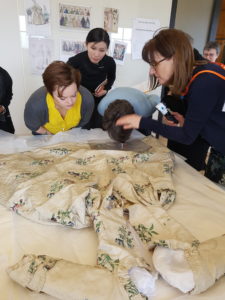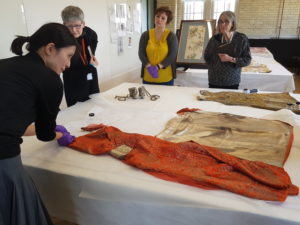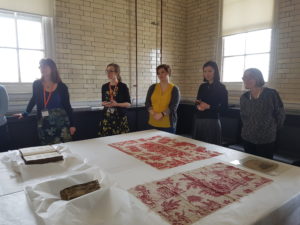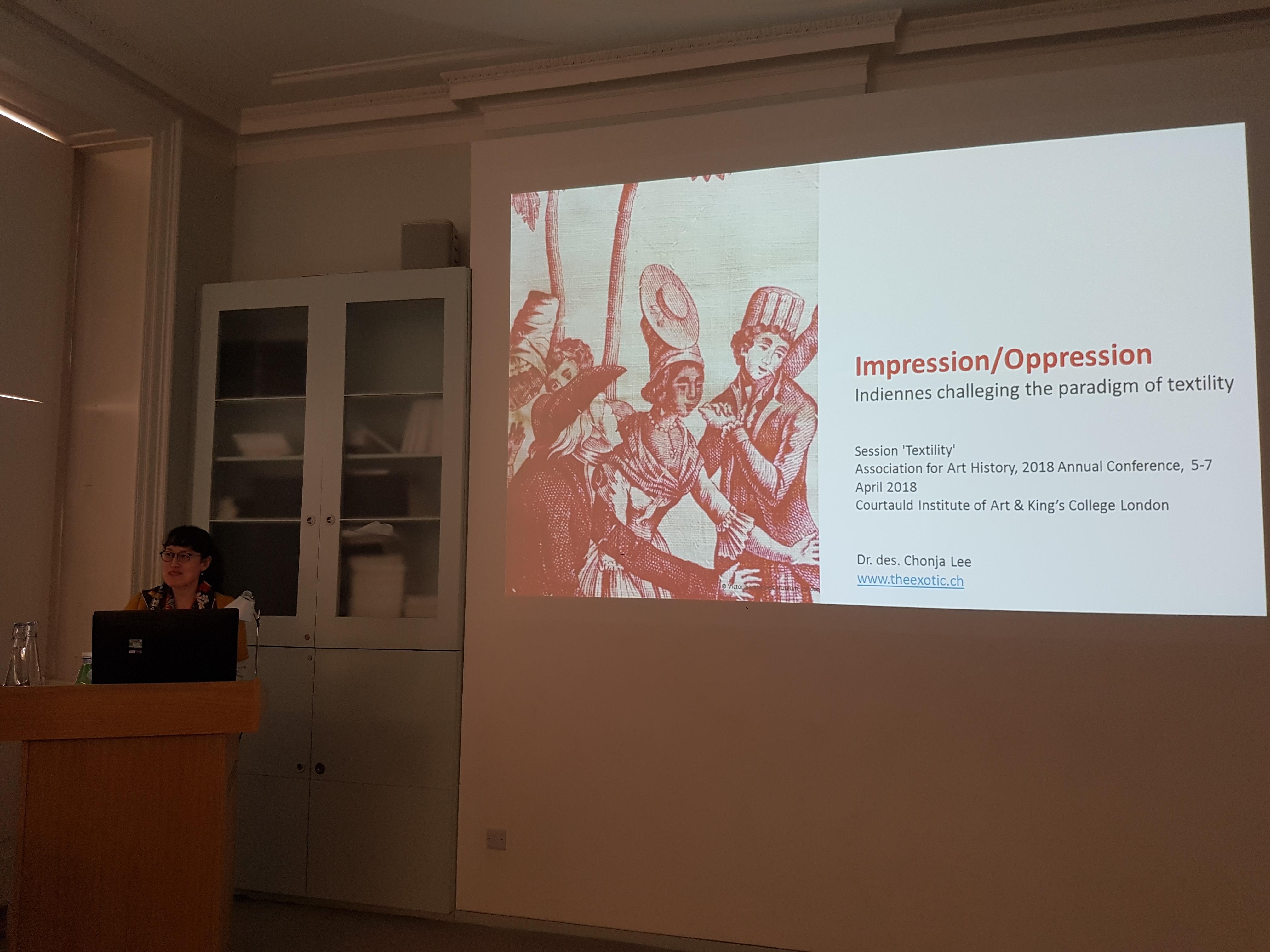Courtauld Institute of Art and King’s College, London: Impression/Opression: Indiennes challenging the Paradigm of Textily, in: Annual Conference of the Association for Art History, Session ‘Textility’, 5–7 April 2018.

Compared to other technologies like weaving, knitting, embroidering or dying, the indiennes’ material and making disappears behind a surface of designs. It is precisely the impression of varied colourful images that is responsible for the 18th-century appreciation of the indiennes. The European manufactories perfected the foreign technology to a degree that industrialised sleekness erased marks of a maker’s hand, like unprecise outlines of motives. The indiennes’ kinship with printed matter became even stronger with copperplate printed book illustrations on its fabric. What kind of theoretical paradigm would work to explore these objects?
She argues that the indiennes stand in opposition to the paradigm of textility and I propose mimesis as an alternative concept of reference. More precisely, I will use the notion of intermediality in order to understand how indiennes reveal mimetic properties when imitating ikat, woven textiles or hand-painted silks through its patterns. Furthermore, I relate them not only to other textiles, but also to other media such as engraving.
Finally, the indiennes don’t just challenge the textility, but, on a meta-level, their historical use also questions textile-based concepts about the global textile trade like interwovenness. Once again, it seems adequate to replace this term with the notion of oppression, considering the indiennes’ role as a major commodity within the transatlantic slave trade. Oppression through indiennes does not only concern political agency but also an intrinsic aesthetic property: The printed cottons oppress space, things and bodies when dressing walls, furniture and people in an immersive all over.


